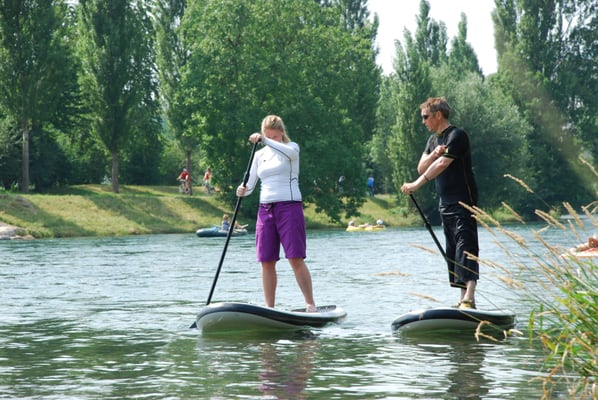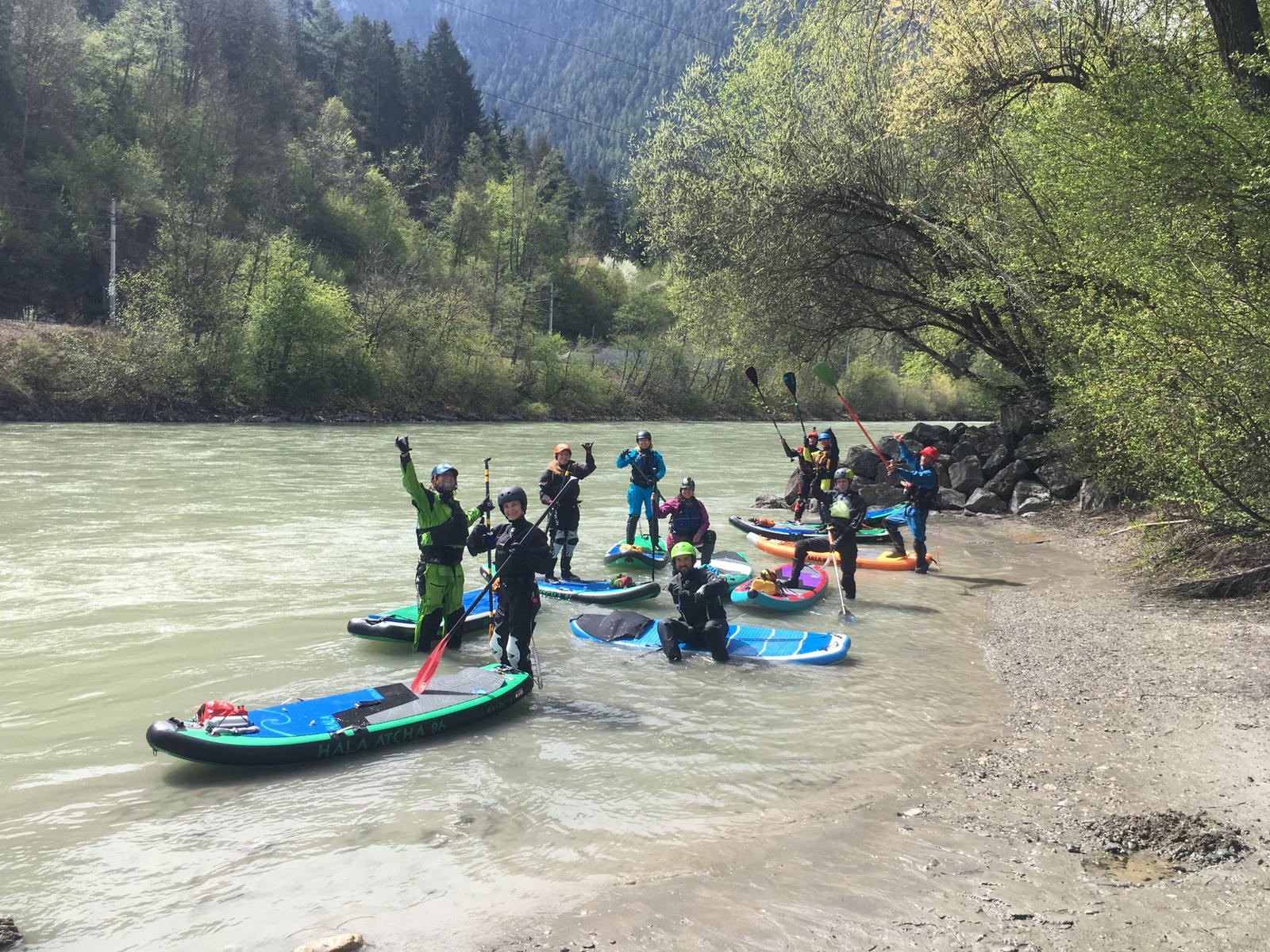This Page
should give an insight into the range of stand up paddling on rivers, from drifting down to the waves, make it easier for everyone interested to get started - and give them the opportunity to explore rivers together. So feel free to contact us, whether it's for questions or criticism.
Our page is still growing. There are weekly new contents comming up. This is just the start, help us expand with content from your region. Let`s connect!
Swiss Rivers
Overview of rivers and water levels
 Easy
Easy- Limmat: Zürich – Dietikon
- Aare: Bern – Hinterkappelen
- Aare: Arwangen – Olten
- Recommended reading:
 Intermediate
Intermediate- Reuss: Bremgarten – Gnadenthal
- Recommended reading:
 Advanced
Advanced- Vorderrhein
- Thur
- Rhone
Whitewater Classes WW
indicate the level of difficulty of the river
up to WWI
up to WWII
WWII+
up to ca. WWIV
(standuppaddler do paddle higher classes)
- start easy, challenge yourself step by step
- choose a river that suits your ability and equipment.
- Learn the most important safety and river rules.
- Check the water level,
- check your equipment.
- Take a course to paddle more safely and have fun in the long run.
How to start
Study the river carefully before starting the tour: where do you get in, where do you have to carry around, where do you get out? Take a map with you, know where you are at all times. Rivers still have enough surprises in store.
Equipment
No (normal) leash!
Never wear a normal leash on the river. This can get tangled and drown. We recommend leash with quick release systems. This must be on the upper body so that you can pull it easily and quickly.
Protective equipment according to own assessment.
more about security and leashes
more about equipment and products in Switzerland
Provisions, water
Weather Protection
there are many sites about what to wear in all seasons on your board - so here just the absolute basics
just remember: for the river it always should be with the least attachements possible and robust to survive the rock contacts
Summer: sun protection
Transitional period: neoprene
Winter: dry suit (robust for river, with integrated socks)
- Board: Many rivers can be paddled well with inflatable all-round boards. in short: the wider the more stable tip: many Swiss rivers tend to be flat. Therefore, make sure that the fins can be disassembled very quickly (and / or). Many shops offer cheap, used river boards. Since river boards are particularly robust and their owners are mostly experienced and passionate paddlers, the risk of function-reducing signs of consumption is absolutely low.
- Paddle: robust (e.g. plastic sheet)
- Protection:
- no leash! (see above)
- PFD / life jacket
- sneakers
- Helmet as needed
- River Map
- Mobilfon
- Whitewater Equipment in Switzerland
 Beginner
Beginner
 Intermediate
Intermediate- Board: Board: Buy special whitewater boards (see advanced) or simply rent them on a trial basis. We do not recommend buying cheap river boards: they are not really cheap - and if you want to paddle more demanding white water, you can quickly reach their limits. In case of doubt, it would be better to buy a simple all-round board for the beginning, which you can use to see the lake - and invest in a long-term good river board with which you can paddle all the rivers you want.
- Paddle
- Protection:
- Quickrelease-Leash
- PFD / life jacket
- Helmet
- Knee Pads
- Sneakers
- River Map
- Mobilfon
- Safety Knife
- Whistle
- Watch
- Whitewater Equipment in Switzerland
 Advanced
Advanced- Board: Special whitewater boards
- Favorites: Hala & Badfish
- Airboard Whitewater
- Tip: changeable fins (much more options for different waters), a lot of rocker (lies better in the waves)
- Paddle
- Protection:
- Quickrelease-Leash
- PFD / life jacket
- Helmet
- Knee / Shin Guards
- Water shoes (robust, non-slip soles)
- elbow pads
- Further protection e.g. G-Form
- Flusskarte
- River Map
- Mobilfon
- Safety Knife
- Whistle
- Watch
- throwbag
- Whitewater Equipment in Switzerland
Do I always wear a helmet?
Basically yes. This information on protective equipment is a personal recommendation and must be assessed individually by everyone. I would never go on a WWII river (Reuss Bremgarten - Gnadental) without a helmet. I usually wear a helmet on the Limmat (WWI), because I can try out everything without worries and don't have to worry much about stone contact. On a mild summer evening when I just want to go down after work, on a light river (WWI), which I know very well, without taking any risks, I stay away from stones and don't wear a helmet.
- non-commercial, independent overview
- Zürich: Supzero.ch Schule & Shop
- Basel: Madfish.ch Schule
- Buochs: Supoint.ch Schule & Shop
- Fribourg: River-Sup.ch Schule & Shop
- Versam: Kanuschule.ch Sicherheitskurse & Paddlershop.ch
Shops & Schools Switzerland
- International: ACA American Canoe Association
- In Switzerland: SCA Swiss Canoe
Instructor Trainings
- In Switzerland: SLRG
- Versam: Kanuschule.ch
Safety Courses
- Exchange, inspiration & paddle meetings
Forums & Groups
 Beginners
Beginners- International
- FB River Sup
- Supzero.com
- Switzerland
- FB Limmat Sup Zürich
 Intermediate
Intermediate- International
- FB River Sup
- Supzero.com
- Switzerland
- FB Limmat Sup Zürich
- FB Whitewater Sup Switzerland
 Advanced
Advanced- International
- FB Whitewater Sup
- Supzero.com
- Switzerland
- FB Limmat Sup Zürich
- FB Whitewater Sup Switzerland



